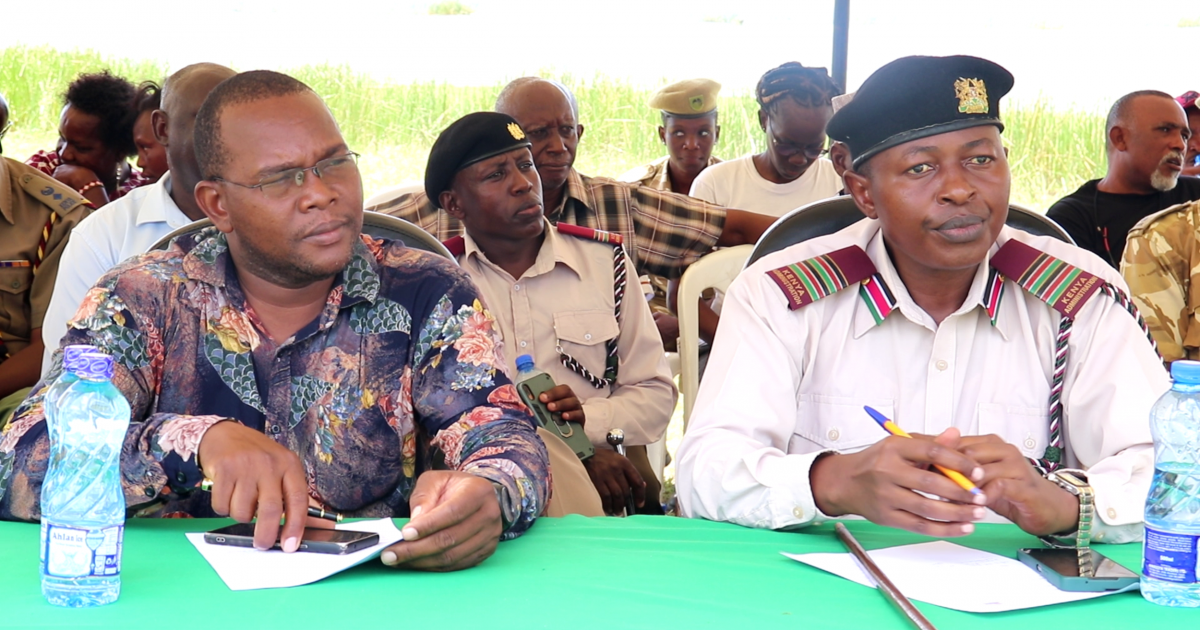Lamu County Government is set to allocate a fifth of its annual development budget towards conservation efforts aimed at protecting the county’s wetland areas now under threat from deforestation.
Speaking at Lamu’s Lake Kenyatta area, Lamu Deputy Governor Mr. Raphael Munyua said that the county government had through its department of Lands, Roads and Water Resources allocated funds towards mapping the county’s water catchment areas that are also under threat from encroachment by farmers.
“The reason why wetland areas such as Lake Kenyatta are drying up is due to land encroachment along riparian land,” Munyua stated revealing that the lake currently has about six metres of silt that has been brought about by those farming along the lake’s tributaries.
He further noted that the county will need about Sh800 million to remove the silt from the Lake which is the main fresh water aquifer within Lamu’s mainland area.
“The first step towards reclaiming our wetland areas is to ensure that all the wetland areas as well as the landing sites within Lamu are gazetted,” he said.
Lamu CEC in charge of Lands, Roads, Urban Physical Planning and Water Resources Tashrifa Mohammed said that the county government has so far processed 15 title deeds out of the 44 wetland areas targeted for conservation.
She warned that those found encroaching on wetland areas risk prosecution adding that the key to ensuring that Lamu’s water supply remains stable is in conserving the water catchment areas.
The same sentiments were echoed by CEC for Agriculture Mr. James Gichu who said that the county government had already embarked on a countywide reforestation programme aimed at ensuring that Lamu’s wetland areas that include the Mangrove ecosystem are protected as well.
He called on farmers to embark on growing grass within their land to conserve the soil integrity of their farms. “Poor farming methods coupled with encroachment of riparian land has led to the degradation of the Lamu’s wetland areas which has further led to the increase of human wildlife conflicts,” Gichu noted.
Lamu County’s NEMA Coordinator Mr. James Jamula said that Lamu residents should play an active role in ensuring the wetland areas are properly conserved by not contaminating water catchment areas through poor disposal of waste and garbage into water catchment areas.
“Complaints have been raised by a section of the public to NEMA over the poor disposal of waste both in Amu Island as well as Mpeketoni, with garbage and sewage being directed into water catchment areas such as Lake Kenyatta,” Kamula said, adding that efforts need to be made to ensure that waste disposal does not affect water catchment areas.
Wetlands International Country Director Ms. Julie Mulonga said her organization is working closely with Lamu County to ensure that Lamu’s wetlands are protected.
“Lamu holds 61 percent of the country’s mangrove forest cover, which is home to many fish and bird species,” Mulonga stated.
She said that in conjunction with NEMA, the Kenya Forestry Service and the county government Wetlands International was working on initiatives aimed at restoring Lamu’s water towers and aquifers such as Lake Kenyatta which were in danger of drying up due to encroachment of riparian land.
By Amenya Ochieng




